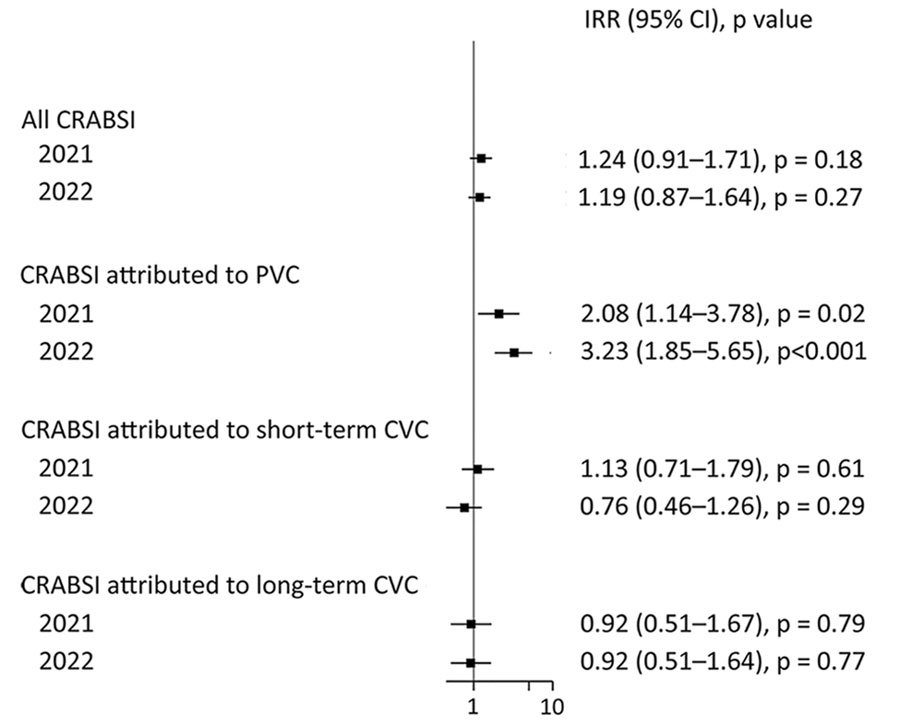Volume 30, Number 1—January 2024
Dispatch
Increased Peripheral Venous Catheter Bloodstream Infections during COVID-19 Pandemic, Switzerland
Figure 2

Figure 2. Incidence rate ratios per 1,000 patient days in a study of intravascular catheter bloodstream infections during the COVID-19 pandemic, Switzerland, January 1, 2020–December 31, 2022. Squares indicate IRRs, bars indicate 95% CIs. Patient-days were used as the denominator; 2020 rates were used as the referent. BSI, bloodstream infection; CRABSI, catheter related or associated bloodstream infections; CVC, central venous catheter; IRR, incidence rate ratio; PVC, peripheral venous catheter.
1These authors contributed equally to this article.
Page created: October 31, 2023
Page updated: December 20, 2023
Page reviewed: December 20, 2023
The conclusions, findings, and opinions expressed by authors contributing to this journal do not necessarily reflect the official position of the U.S. Department of Health and Human Services, the Public Health Service, the Centers for Disease Control and Prevention, or the authors' affiliated institutions. Use of trade names is for identification only and does not imply endorsement by any of the groups named above.